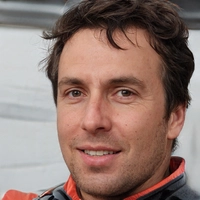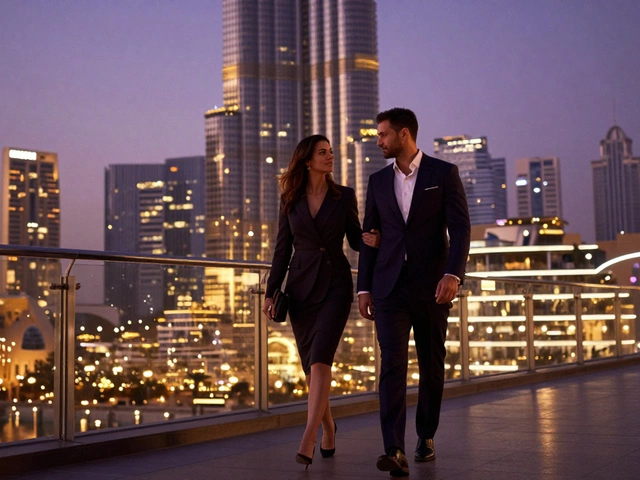BAM’s Fall 2025 Season Highlights Women Artists with ‘Optimistic Voices’ and ‘nothing personal, just everything’

On November 7, 2025, audiences at BAM Fisher’s Fishman Space in Brooklyn witnessed May’s "Optimistic Voices" — a dance-theater piece that turns the quiet chaos of daily life into something hauntingly beautiful. Just blocks away, The Chocolate Factory premiered "nothing personal, just everything", a companion piece that blurs the line between performer and observer. Together, they anchored the opening weeks of the BAM Next Wave FestivalBrooklyn, a season-long explosion of experimental art that runs through January 2026. This isn’t just another arts festival. It’s a reckoning — with grief, with habit, with the fragile, beautiful mess of being human.
A Season Built on Women’s Voices
Brooklyn Academy of Music didn’t just announce its Fall 2025 lineup — it declared a mission. On May 15, 2025, Amy Cassello, BAM’s Artistic Director, laid it out plainly: "My goal was to put together a season that focused on women artists." It wasn’t tokenism. It was curation with intention. From Martha Graham’s enduring legacy to the raw, untested voices making their BAM debuts, the season traces a lineage — one that’s often been sidelined in mainstream performance spaces. The result? A program that doesn’t just include women — it centers them. And not just as subjects, but as architects of form, rhythm, and meaning.The Art of the Everyday, Turned Inside Out
"Optimistic Voices" doesn’t rely on grand gestures. Instead, May and her ensemble use the smallest motions — a pause between sentences, the way a hand trembles reaching for coffee, the sigh that comes after silence — to reveal the emotional architecture of ordinary life. Performers speak fragments of thought, repeat phrases until they lose meaning, then rebuild them into something new. It’s exhausting. It’s intimate. It’s unforgettable. One audience member described it as "watching someone unravel their own mind in real time." And that’s exactly the point. At The Chocolate Factory, "nothing personal, just everything" takes a different path. Here, the stage becomes a living archive of collective memory. Movement isn’t choreographed so much as summoned — drawn from the residue of past performances, from the breath of the crowd, from the flicker of a lightbulb overhead. It’s messy. It’s unpredictable. And it’s the kind of work that only happens in spaces like this — where risk isn’t a buzzword, but a requirement.More Than Dance: A Festival of Voices
The Next Wave Festival is never just dance. This year, it’s poetry, radio theater, and archival resurrection. Andrea Voets’ "FOR REAL"Brooklyn — running November 19–23 — feels like stumbling into a late-night conversation that somehow becomes a national reckoning. Live music, unscripted monologues, and audience participation merge into something that’s part podcast, part protest, part prayer. Meanwhile, Hanif Abdurraqib brings his lyrical, grief-laced poetry to the stage in "I Guess It Was My Destiny To Live So Long," a series that echoes through the halls of BAM like a whispered secret. And then there’s the Franklin Furnace’s 50th AnniversaryBrooklyn exhibition — a sprawling, multimedia homage to the avant-garde collective that helped birth performance art as we know it. Original videotapes, handwritten manifestos, and ephemera from the 1970s line the walls of BAM’s galleries, reminding visitors that today’s radical acts are built on yesterday’s rebellions.
Why This Matters Now
In a world where art is often packaged as entertainment — streamlined, sanitized, algorithmically optimized — BAM’s season feels like an act of resistance. The performances don’t offer answers. They ask questions that sting: What happens when we repeat the same behaviors without meaning? How do we hold space for grief without collapsing under it? Can vulnerability be a form of power? Tamara McCaw, BAM’s Interim CEO, put it plainly: "Ensuring that we remain an accessible and equitable home serving artists, audiences, and members of our community could not happen without our incredible supporters." That’s the quiet heartbeat of this season. It’s not just about spectacle. It’s about survival — of art, of community, of the messy, imperfect, essential act of being together in a room, breathing the same air, watching something real unfold.What’s Next
The season doesn’t end with November. Les Arts Florissants’ "Messe de Minuit"Brooklyn brings sacred Baroque harmonies to the winter solstice. Film screenings with Arundhati Roy and Linton Kwesi Johnson probe colonial legacies and sonic resistance. And in January, as the festival closes, one thing is certain: the work won’t be forgotten. Tickets went on sale to BAM Members on May 15, 2025, and to the public on May 22, 2025 — a timeline that underscores how quickly these events are claimed. By late summer, most performances had already sold out to patrons. That’s not luck. It’s recognition. People are hungry for art that doesn’t flinch.
Behind the Scenes: A Legacy in Motion
Founded in 1861, Brooklyn Academy of Music has spent over 160 years evolving — from opera house to experimental crucible. The Next Wave Festival, launched in 1983, was born from a belief that art should challenge, not comfort. This year’s lineup doesn’t just honor that legacy — it redefines it. With over 40 performances across dance, theater, music, and visual art, the season is a living document of what happens when artists are given space, time, and trust. The most powerful moments aren’t the ones that dazzle. They’re the ones that linger — the silence after a line is spoken too softly, the way a dancer’s foot catches on the floor as if remembering a wound, the collective gasp when a projection flickers and reveals a face from 1987 staring back.Frequently Asked Questions
Who is May, and why is their work significant in this season?
May is a Brooklyn-based choreographer and performance artist whose work explores the psychological weight of repetition in daily life. Their piece, "Optimistic Voices," is a landmark in the 2025 Next Wave Festival because it transforms mundane gestures — a glance, a sigh, a pause — into profound acts of emotional archaeology. This is May’s first major New York institutional debut, and critics are calling it "a quiet revolution in movement theater." Their work stands alongside icons like Martha Graham, bridging generations of women who’ve reshaped dance from the margins.
How does BAM ensure accessibility for audiences with limited income?
BAM offers pay-what-you-can performances for over 20 events this season, including free community screenings and school-time matinees. Additionally, the "Next Wave Access Program" provides discounted tickets to students, seniors, and NYC residents on public assistance. In 2024, over 32% of attendees used these programs — a number that’s expected to rise in 2025 as BAM expands its outreach to neighborhoods beyond Brooklyn Heights.
What makes the Franklin Furnace exhibition unique compared to other art retrospectives?
Unlike traditional retrospectives, Franklin Furnace’s 50th-anniversary show at BAM doesn’t just display artifacts — it resurrects performances. Visitors can hear audio recordings of banned 1970s spoken-word pieces, watch grainy VHS footage of underground dance rituals, and even participate in reenactments led by original artists. The exhibition treats history as something alive, not archived — a radical approach that mirrors Franklin Furnace’s founding ethos: "Art is not for sale, it’s for survival."
Why is "FOR REAL" described as a "collective reckoning"?
Andrea Voets’ "FOR REAL" invites the audience to become co-creators. During the performance, attendees are asked to share personal stories via anonymous voice recordings, which are then woven into the live soundtrack. No two shows are the same. In one version, a mother spoke of losing her son to gun violence; in another, a veteran described the silence after returning home. The piece doesn’t offer resolution — it demands witness. That’s why it’s called a reckoning: it holds space for truths we rarely speak aloud.
How does this season compare to previous Next Wave Festivals?
Past festivals focused on technological innovation or global political themes. This year, the emphasis is inward — on the body, memory, and emotional labor. While previous editions featured more international artists, 2025’s lineup is 68% New York-based, with 80% led by women or nonbinary creators. It’s the most locally rooted, emotionally direct season in Next Wave’s 42-year history — a deliberate pivot toward intimacy in a fractured cultural moment.
Will any of these performances tour beyond Brooklyn?
Yes. "Optimistic Voices" and "FOR REAL" have confirmed engagements at the Walker Art Center in Minneapolis and the Institute of Contemporary Art in Boston for spring 2026. But BAM’s decision to keep the bulk of the programming local — especially the Franklin Furnace archive and community talks — signals a shift. The goal isn’t just to export art. It’s to deepen roots. In Brooklyn, where rent and displacement threaten cultural spaces, that’s as political as any protest.


